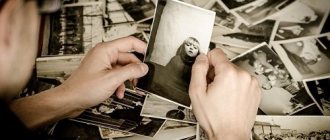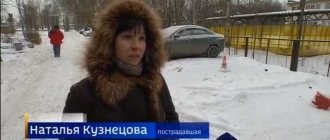Do you often think about space and the existence of life? Our inquisitive consciousness sometimes touches on questions to which there is no clear answer, and we have to suffer in guessing. Every night we see dreams where our body and mind are subjected to incredible tests. We can travel through alien worlds, planets and universes. And in the morning we won’t even remember what happened in our “mysterious world.” What do astronauts dream about? How does weightlessness at rest affect our mind? Why do they always try to avoid this issue and why do we know so little about it? Let's figure this out.
And we dream about grass, grass near the house
What do astronauts dream about in space? Is there a clear difference between “earthly” and “cosmic” sleep? In fact, there are incredibly many opinions and versions, some of them converge, while others diverge. And this is not surprising, because the influence of space and weightlessness occurs individually for everyone. Some astronauts see in their dreams “grass near the house”, relatives, loved ones and loved ones, because they experience some stress from the process of flying and being in space, while others experience crazy things in their dreams. No matter who talks about the serious training of astronauts, some of them still show their human weaknesses at certain moments, and this happens without exception. We ourselves sometimes experience tragedies in our dreams, but we cannot even imagine what an astronaut dreams about.
Place and position of the astronaut's body during sleep
In the cabin of a spaceship there is no top and bottom in the usual sense. Everything is relative in it. You can “walk” on the ceiling and “stand” on your head on the floor. No gravity - no gravity. For this reason, you can sleep in any position you want, even upside down.
The astronauts rest in special sleeping blocks. There is not a single porthole in them, so that frequent sunrises do not wake up the sleepers. The lights on the ship cannot be turned off, there are no curtains, and dawn in space occurs every 1.5 hours.
The designers of space stations tried very hard to eliminate all the disadvantages of life in zero gravity. However, it was not possible to completely eliminate irritating factors. The ships are very light and noisy. The equipment is constantly working. To be able to get a good night's sleep, astronauts wear thick black blindfolds over their eyes and plug their ears with earplugs.
Why are they silent about this?
There is an assumption that “cosmic” dreams have several stages of development. We can know so little about them, because the astronauts themselves do not like to talk about it. Sometimes their stories can shock the public and they will be considered crazy. As we know, mentally ill people will never be sent into space in their lives. One has only to tell the psychologist what the astronaut is dreaming about, and immediately after such a revelation he will prescribe appropriate treatment, and the astronaut will be forced to ban him from flying for life. Hence we conclude that “space dreams” are kept silent only so that the astronauts themselves do not lose their jobs.
Free time
Soichi Noguchi cleaning Kibo's laboratory
Outside of work, astronauts socialize, watch TV, play or read. It also gives you time to connect with loved ones, send emails, observe the Earth, and take amazing photos. Sometimes crew members are given bonuses. For example, in one of the missions, people on board saw the film “The Martian” even before its premiere on Earth.
The most difficult thing is to adapt to conditions of weightlessness. For example, many suffer from space sickness and during the adaptation period they experience headaches and severe nausea. A similar thing occurs when returning to Earth.
Astronauts also have to spend at least 2 hours every day doing intense training, including running on a treadmill and lifting weights. All this is done to counteract microgravity, which reduces muscle mass and bone density levels.
What do astronauts say, what do they dream and what do they see?
Still, some secrets about man in space leak out, and the inquisitive public has maximum interest in this information. It's not just about dreams. There are real cases where astronauts, being in a cheerful and conscious state, experienced terrible things. “The effect of someone else's presence”, have you ever heard of this? This is when members of the space crew see the phantom of a “dead relative” or hear strange whispering voices that it is undesirable for humanity to study space, because it will never achieve results.
Sleeping on the ISS
There are no usual beds here, since the crew members cannot take the usual lying position in zero gravity. They sleep in bags attached vertically to the walls. Their location is carefully chosen to be placed near the air flow provided by the fans.
Astronauts say that at first it is difficult to fall asleep until you get used to the new conditions. It is better to curl up into the shape of an embryonic cocoon. Many people sleep in shorts, but if it's cold, bring pajamas. For the first time, it is advised to take earplugs, because the equipment on the ISS is noisy all night long. However, you quickly get used to the noise. Dreams in space are the same as on Earth.
What do astronauts dream about in orbit?
While in orbit, the dreamer can experience various transformations, during which he can reincarnate into some animal or creature that is completely incomprehensible to the human mind. From a classical point of view, this is explained by the theory of “changes in consciousness,” but humanity has not yet reached the level to begin studying such processes at the cosmic level. Based on this, it is not yet possible to explain the pattern of the phenomenon of changes in consciousness in space.
One American astronaut told a story about what astronauts dream about. He talked about his friend who managed to fly into space, let's call him K1 (cosmonaut-1). During sleep, K1 transformed into a dinosaur. The dreamer experienced sensations that most accurately describe the behavior of the ancient lizard. According to the descriptions of appearance, everything also matched. He said the following: “The first thing I felt was how huge paws began to grow on me, which immediately began to become covered with scales. Membranes and huge claws immediately grew on the limbs. However, this was not the most surprising thing for me. At a certain point, I began to feel my horny plates with my back and moved them as I wanted. There was no hint that this was a dream or that I was even human. My voice was so loud and fierce that it vibrated around.”
In parallel with this, he constantly found himself in some kind of fantastic world, where the laws of physics are extremely different from the “earthly” ones, everything proceeds in a special and unpredictable way. Each subsequent dream, he was embodied in a new creature that lives in an unknown universe, where the environment is generated on the fly. At the same time, he clearly understood the speech (or sounds) of imaginary creatures and could communicate with them with ease.
Space technologies in our lives
Space station designers borrowed the idea of using sleeping bags from tourists. However, the inhabitants of the earth also received a lot from the space explorers. Memory Foam material is a light and dense foam with a “memory effect”.
It was originally created for spacesuits. Memory perfectly softens shocks and creates comfortable conditions for different parts of the body. On Earth, these properties were useful to manufacturers of mattresses and pillows. The most comfortable orthopedic products in the world began to be made from Memory foam.
Do you want to sleep like no astronaut has ever dreamed of? Stop by the Magic of Sleep store and buy an orthopedic mattress with a layer of Memory Foam material! You will appreciate the comforts humanity receives thanks to the discomfort inherent in the life of space explorers.
Source
What sensations do astronauts experience?
What do astronauts dream about during their working days in orbit? During the period of dreaming in space, a person is transported in space and time; he can travel through unknown cosmic bodies. All this is perceived habitually, as if something familiar. Fantastic dream states are born as if someone is dictating information into your head. This voice stream haunts the person throughout the dream. According to dreamers, there is a feeling that behind this voice there is someone majestic and powerful who is cleverly manipulating your emotional and mental sense of what is happening. What is most noteworthy is that fantastic dream-states do not occur at night (not when astronauts have a “lights out”), but during the working day, when a person relaxes for a few minutes and loses his vigilance. Time in a dream is very extended; it feels 50-100 times slower than “earthly” time.
Schedule
Frank De Winn on the treadmill
The ISS constantly moves around our planet, completing one revolution in approximately 92 minutes. Therefore, crew members can enjoy 16 sunrises and sunsets. To simulate daytime and nighttime, the astronauts deliberately close the airlocks every 16 cycles.
Orbital station employees use Greenwich Mean Time (GMT), but at the time of the shuttles' arrival, the MET system was used (there is no reference to a specific time zone). The astronauts gradually shifted their sleep times to meet the shuttle on time, after which they returned to their usual system.
Cosmic dream
Russian scientists have begun creating drugs that can put astronauts into an artificial hypobiotic state, similar to hibernation in bears. Anatoly Kovtun, head of the project group for chemical, biological and medical research at FPI, told RIA Novosti.
The drug, being developed to put astronauts into hibernation, will be used during long interplanetary flights.
“It is possible to reach distant outer spaces only by reducing oxygen consumption and reducing the consumption of energy resources for the cosmonauts’ body,” Kovtun said.
Researchers have already tested the drug on laboratory animals. They were immersed in a hypobiotic state for a certain time using drugs developed at the FPI. For six days, all biochemical processes in the body slowed down in the experimental subjects: body temperature decreased, blood flow and heart rate slowed down, organs and tissues began to consume significantly less oxygen. After the cessation of the effect of the substance, the animal’s body returned to its normal state after 10-24 hours.
Safe suspended animation
Doctors have long been studying the process of immersing a person in a state of suspended animation. However, according to experts, it is too early to assess the safety of the method proposed by FPI scientists.
“Any medical technology and drug requires comprehensive study, first in the laboratory, then on volunteers. We are already using certain methods of suspended animation in practice. For example, lowering body temperature is used in surgery, giving doctors more time to perform complex operations. During such manipulations, the blood cools and the person enters a state of clinical death, but at the same time all his functions are preserved. After this, the patient is “warmed up” and he returns to his usual state,” said Albert Rizvanov, Doctor of Biological Sciences, Professor at the Institute of Fundamental Medicine and Biology of KFU, in an interview with RT.
The expert also noted that many similar studies are conducted with animals. For example, scientists have successfully brought artificially frozen frogs back to life.
“But the problem is that humans have a much more complex organism. And the most important question related to suspended animation is not physiological, when it is necessary to preserve the body. It is much more difficult to preserve higher nervous activity (human consciousness and memory). The development of approaches to immerse a person in an artificial hypobiotic state is only at the initial stage. But this is a very important direction for both astronautics and medicine, which needs to be explored further,” concluded Rizvanov.
Space menu
During the holidays, astronauts can enjoy packages from home. Pizza, ice cream and other delicacies have already been delivered into space. But the usual menu is different. Food is one of the most important guarantees for the health of crew members. Therefore, there are 3 main criteria:
Basically, food products themselves are divided into three types:
Of course, with such a diet there is not enough fresh vegetables and fruits. Women need to gain at least 2800 calories per day, and men - 3200. When delivering fruits, those that can be stored at room temperature are selected, because they are not allowed to waste refrigerator energy.
Fresh vegetables are more difficult, but crew members have already managed to grow three varieties of lettuce. They are trying to develop this technology as actively as possible, because when flying to Mars and exploring other worlds, you need to be able to provide yourself with food on your own, and not rely on earthly deliveries.
Falling asleep for decades: man and hibernation
Now this sounds like the beginning of a science fiction novel - and indeed, the idea of “hibernation” was first voiced by science fiction writers. In their work, artificially slowing down metabolism with the ability to restart all biological processes at the right time has become one of the key technologies for long manned expeditions into deep space. In the fictional universe of Alien, the date of its appearance is precisely stated - May 20, 2028. This date looks quite likely for our real world: work is already underway.
In winter and in space
Even if we do not take into account bacterial spores and plant seeds, suspended animation is quite widespread in nature. Many mammals and birds are capable of lowering their body temperature and slowing down their metabolism, falling into a state of torpor. Typically, this allows them to survive adverse periods, be it the heat of the day, the darkness of the night or the cold of winter. Small rodents and almost a hundred bird species, from hummingbirds and swifts to fairly large kookaburra kingfishers, “switch off” for 4–16 hours a day, most often at night.
Larger animals, from hedgehogs to bears, hibernate for one or more months of winter (hibernation) or summer (estivation). This is usually due to a lack of food resources, but some species go into torpor for other reasons. Thus, some bats mate in the fall, after which they freeze in a stupor in a cold cave. Only in the spring, when females begin to ovulate, do the sperm that have waited out the winter fertilize them, and babies are born. Hibernation is the most famous type of suspended animation, and, apparently, that is why science fiction writers called their “cosmic suspended animation” that way.










